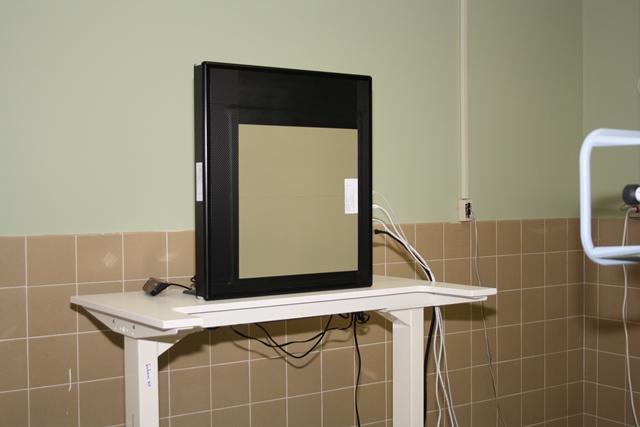By Kara Weiler
Grand River Hospital (GRH) is partnering with KA Imaging to conduct a pilot study on the use of a high-resolution multi-energy digital x-ray imager for patients with lung nodules. This new technology is faster and less expensive, with the potential to detect lung cancer earlier with better image quality and lower levels of radiation than a traditional CT scan.
A startup out of the University of Waterloo, KA Imaging specializes in the development of low-cost portable multi-energy x-ray detectors like the one being piloted at GRH. A multi-energy detector is similar to previous dual energy detectors traditionally used to detect bone density. However, KA’s detector is portable, requires only one exposure, enables conventional X-ray images at up to 30 per cent less radiation to the patient, and captures multiple energies enabling soft tissue and bone separation.
The study aims to compare the quality of images between a standard CT scan and the KA Imaging developed multi-energy digital x-ray imager. Up to 30 patients with existing lung nodules who are already undergoing CT scans will be recruited to the study. Patients will receive an x-ray on a KA Imaging prototype panel the same day as their scheduled CT scan. The prototype panels, which send images to nearby computers, are installed on one of GRH’s existing x-ray machines, making their potential adoption easy and inexpensive. So far, four patients have joined the study.
“We are excited to partner with KA Imaging to trial this innovative technology at Grand River Hospital,” says Tina Mah, vice president of research and innovation at GRH. “Our mandate is to advance exceptional care and we continue to be leaders in our community by trialing new technologies, like this multi-energy x-ray, in partnership with our patients.”
KA Imaging founder Karim S. Karim, an electrical and computer engineering professor at University of Waterloo, believes that capability could pave the way for widespread screening programs to help save lives as this technology may be used in the future to detect lung cancer earlier. “If a cancer lesion is located in the apex of a lung and bone obscures it, it can’t hide anymore,” explains Professor Karim. “If an abnormality is hiding behind the heart, we can now see it nice and clearly.”
Unlike CT scans, which are typically used only for high-risk patients because of radiation concerns, low radiation levels mean retrofitted x-ray machines could be used providing superior image quality at a lower dose of radiation on equipment that is a fraction of the cost of CT scan. Karim says nothing like this exists now.
Dr. Vikram Venkatesh is a radiologist at GRH and is leading the study at the hospital. He is excited to see the study progress and the potential impact an x-ray like this could have on improving patient care.
“The human side of this work is so important,” says Dr. Venkatesh. “We cannot make advancements in patient care without first working with them to trial new technologies.”
The initial prototype developed by KA Imaging was made possible through funding from Grand Challenges Canada (GCC), FACIT, and the Ontario Centres of Excellence (OCE).
KA Imaging recently received Health Canada approval to extend the trial to include patients suspected of having lung cancer in addition to patients with existing cancer. After the study is completed, KA Imaging will launch the commercial version of the technology in mid-2019.
Kara Weiler is the Community Engagement Specialist, Office of Research & Innovation at Grand River Hospital.


